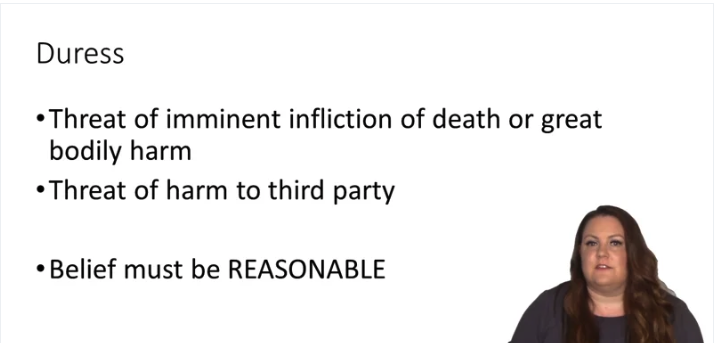SmartBrief
Confirm favorite deletion?
Criminal Law Keyed to Ohlin
People v. Anderson
Citation:
28 Cal. 4th 767, 50 P.3d 368 (2002)
ProfessorScott Caron
CaseCast™ – "What you need to know"
Facts
Margaret Armstrong was accused of molesting two girls who resided in a camp area near Eureka. A group of people, including Ron Kiern, the father of one of the girls, and the defendant, confronted Armstrong at the camp. Members of the group dragged Armstrong to a nearby field, beat her, put duct tape over her mouth, tied her to a bush naked, and abandoned her.
Later, Kiern and the defendant saw Armstrong running naked down the street. The two grabbed Armstrong, forced her into a car, and drove away. They then put Armstrong into a sleeping bag, wrapped the bag with duct tape, and placed her, screaming, into the trunk. They then killed her with a large rock, and disposed of Armstrong’s body by rolling it down a ravine. Kiern and defendant later commented to others that Armstrong was dead.
At trial, the defendant testified that he had tried to convince Kiern to take Armstrong to the hospital. However, at Kiern’s instruction, the defendant opened the trunk and Kiern put Armstrong inside. Kiern told defendant to retrieve a certain rock the size of a cantaloupe. Defendant said, “Man, you are out of your mind for something like that.” Kiern responded, “Give me the rock or I’ll beat the shit out of you.” Defendant gave him the rock because Kiern was bigger than he and he was “not in shape” to fight. When asked what he thought Kiern would have done if he had said no, defendant replied: “Punch me out, break my back, break my neck. Who knows.”
A jury convicted him of first degree murder and kidnapping. He appealed, arguing that the court erred in refusing to allow duress as a defense. He argued that he only helped Kiern because he was threatened by him. The Court of Appeals affirmed his conviction, holding that duress is not a defense to first degree murder.
Only StudyBuddy Pro offers the complete Case Brief Anatomy*
Access the most important case brief elements for optimal case understanding.
*Case Brief Anatomy includes: Brief Prologue, Complete Case Brief, Brief Epilogue
- The Brief Prologue provides necessary case brief introductory information and includes:
Topic:
Identifies the topic of law and where this case fits within your course outline.Parties:
Identifies the cast of characters involved in the case.Procedural Posture & History:
Shares the case history with how lower courts have ruled on the matter.Case Key Terms, Acts, Doctrines, etc.:
A case specific Legal Term Dictionary.Case Doctrines, Acts, Statutes, Amendments and Treatises:
Identifies and Defines Legal Authority used in this case.
- The Case Brief is the complete case summarized and authored in the traditional Law School I.R.A.C. format. The Pro case brief includes:
Brief Facts:
A Synopsis of the Facts of the case.Rule of Law:
Identifies the Legal Principle the Court used in deciding the case.Facts:
What are the factual circumstances that gave rise to the civil or criminal case? What is the relationship of the Parties that are involved in the case.Issue(s):
Lists the Questions of Law that are raised by the Facts of the case.Holding:
Shares the Court's answer to the legal questions raised in the issue.Concurring / Dissenting Opinions:
Includes valuable concurring or dissenting opinions and their key points.Reasoning and Analysis:
Identifies the chain of argument(s) which led the judges to rule as they did.
- The Brief Prologue closes the case brief with important forward-looking discussion and includes:
Policy:
Identifies the Policy if any that has been established by the case.Court Direction:
Shares where the Court went from here for this case.

 4m 6s
4m 6s